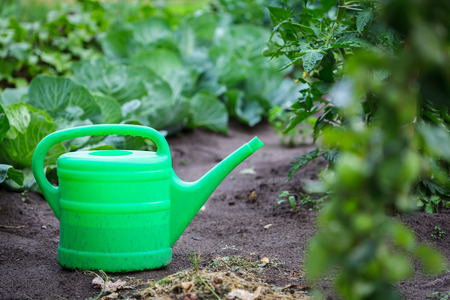Introduction: Tackling Garden Pests the Organic Way
Gardening in the UK is a cherished pastime, yet it comes with its own set of challenges—chief among them, the persistent issue of garden pests. While chemical solutions are readily available, many British gardeners are increasingly seeking natural and sustainable alternatives. Homemade organic sprays offer a practical and eco-friendly method to protect your plants from unwanted visitors such as aphids, slugs, and caterpillars. By using ingredients commonly found in British kitchens and gardens, these remedies not only minimise harm to beneficial wildlife but also reduce the environmental impact associated with synthetic chemicals. This article explores the importance of incorporating homemade organic sprays into your gardening routine, addresses some of the most common pests found in British gardens, and highlights the numerous benefits of choosing natural remedies over conventional chemical options.
2. Essential Ingredients for Organic Garden Sprays
When crafting homemade organic sprays to combat common British garden pests, the effectiveness of your solution largely depends on the quality and accessibility of its ingredients. Fortunately, the UK offers a wealth of eco-friendly components that can be easily sourced from local supermarkets, garden centres, high street shops, or even community allotments.
Key Eco-Friendly Ingredients Commonly Used in the UK
| Ingredient | Role in Pest Control | Sourcing Tips |
|---|---|---|
| Garlic | Acts as a natural insect repellent due to its strong aroma; deters aphids, slugs, and whiteflies. | Readily available at local grocers, farm shops, or grow your own in an allotment plot. |
| Chillies | Contains capsaicin which irritates many soft-bodied insects like greenfly and caterpillars. | Buy fresh or dried from supermarkets or specialist food stores; chilli plants are easy to cultivate in pots. |
| Pure Soap (Unscented) | Disrupts the protective coatings of pests such as aphids and mites; safe for most plants when diluted. | Look for traditional soap bars (free from additives) in health shops or local markets. |
| Essential Oils (e.g., neem, peppermint, lavender) | Pungent scents confuse and repel various pests; some oils also have anti-fungal properties. | Available at chemists, health food stores, or online retailers specialising in natural products. |
| Bicarbonate of Soda | Treats fungal infections like powdery mildew; alters leaf surface pH to inhibit spore growth. | Easily found in baking aisles of supermarkets or corner shops. |
| Vinegar (White) | Used as a mild herbicide or cleaning agent for garden tools and containers. | Sourced affordably from any supermarket across the UK. |
Sourcing Locally for Sustainability
Embracing locally-sourced ingredients not only reduces your environmental impact but also supports community producers and allotment societies. When possible, opt for organic produce to maintain the integrity of your eco-friendly approach. Consider joining neighbourhood gardening groups where surplus harvests and resources are often shared among members. Many cities host farmers’ markets where unsprayed garlic, chillies, and herbs are sold directly by growers, providing you with traceable origins and fresh stock for your homemade solutions.
Quick Checklist: Where to Find Your Ingredients
- Supermarkets: Garlic, chillies, vinegar, bicarbonate of soda
- High Street Health Shops: Pure soaps, essential oils
- Allotments & Community Gardens: Home-grown garlic, fresh herbs, advice from fellow gardeners
- Online Retailers: Speciality essential oils and organic options if unavailable locally
Tip:
If you’re cultivating your own ingredients, choose pest-resistant varieties suited to the British climate. This ensures a steady supply for your sprays while promoting biodiversity in your plot.
![]()
3. Recipes for Effective Homemade Sprays
Creating your own organic sprays is both cost-effective and environmentally friendly, especially when tailored for British gardens. Below are step-by-step guides to crafting proven solutions that address common pests like aphids, slugs, greenfly, and whitefly.
Aphid Control Spray: Garlic and Chilli Infusion
Ingredients:
- 2 garlic cloves, crushed
- 1 small fresh chilli, chopped
- 1 litre of water
- 1 teaspoon mild liquid soap (biodegradable)
Instructions:
- Add garlic and chilli to the water in a saucepan. Simmer gently for 10 minutes.
- Allow the mixture to cool, then strain into a spray bottle.
- Add the liquid soap and shake well.
Application Tips:
Spray directly onto aphid-infested plants in the early morning or late afternoon. Repeat every few days as needed and after rainfall.
Slug Deterrent Spray: Coffee Solution
Ingredients:
- 2 tablespoons used coffee grounds
- 1 litre of water
Instructions:
- Dissolve the coffee grounds in water and allow to steep overnight.
- Strain and pour into a spray bottle.
Application Tips:
Mist around vulnerable seedlings and garden beds, focusing on soil rather than foliage. Reapply after heavy rain.
Greenfly Repellent: Herbal Oil Blend
Ingredients:
- 10 drops peppermint essential oil
- 1 teaspoon mild liquid soap
- 1 litre of water
Instructions:
- Add essential oil and soap to water. Mix thoroughly in a spray bottle.
Application Tips:
This gentle blend works well on roses and soft-stemmed plants. Use weekly for ongoing protection against greenfly infestations.
Whitefly Control: Neem Oil Spray
Ingredients:
- 1 teaspoon neem oil (cold-pressed)
- 1/2 teaspoon mild liquid soap
- 1 litre of lukewarm water
Instructions:
- Add neem oil and soap to water in a spray bottle. Shake vigorously before each use.
Application Tips:
Nebulise onto the undersides of leaves where whiteflies congregate. Repeat every seven days during active infestation periods.
Tried-and-tested by British gardeners, these organic recipes provide targeted, sustainable solutions for managing pests while supporting local biodiversity. Always spot-test sprays on a small area first to ensure plant compatibility.
4. Best Practices for Safe and Efficient Application
Applying homemade organic sprays effectively in British gardens requires careful attention to both timing and technique, particularly considering the UKs variable climate and garden biodiversity. Below are key best practices to ensure your treatments are safe, efficient, and pollinator-friendly.
Timing Your Applications
For maximum effectiveness and minimal impact on beneficial insects, apply organic sprays during early morning or late evening when pollinators like bees are less active. These times also reduce evaporation rates, allowing the spray to remain effective for longer periods.
| Time of Day | Advantages | Considerations |
|---|---|---|
| Early Morning | Cooler temperatures, low wind, reduced pollinator activity | Dew may dilute spray; check weather forecast for rain |
| Late Evening | No direct sunlight, pollinators have returned to nests/hives | Higher humidity may prolong drying time |
Weather Considerations in the UK
The unpredictable British weather can affect spray efficacy. Avoid spraying just before or after rain as it can wash away the solution. Likewise, refrain from application during windy conditions to prevent drift onto non-target plants and areas frequented by beneficial insects.
Pollen-Friendly Practice
Avoid spraying directly onto open flowers to protect pollinators such as bees, hoverflies, and butterflies. Target leaves (especially undersides) where pests often reside. If possible, apply sprays when plants are not in full bloom or cover blooms temporarily during application.
Garden Layout Tips
- Zoning: Treat only infested zones rather than blanket-spraying the entire garden.
- Companion Planting Areas: Be cautious around companion plants that attract beneficial insects.
- Edible Crops: Ensure sprays are food-safe if applied near fruit or vegetable beds; always rinse produce before consumption.
Summary Table: Application Best Practices
| Practice | Rationale | UK-Specific Tip |
|---|---|---|
| Avoid peak sun hours (11am–3pm) | Prevents rapid evaporation and leaf scorch | Cloudy days are common—use this to your advantage! |
| Aim for still days with no rain forecast | Ensures targeted application remains effective | Check Met Office updates before spraying |
| Sparingly apply on necessary areas only | Reduces risk to non-target organisms and conserves spray solution | Biodiverse British gardens benefit from selective treatment |
| Avoid flowering heads and open blooms | Keeps pollinators safe from accidental exposure | If unavoidable, shield blooms with cardboard during spraying |
| Monitor pest levels post-application before reapplying | Prevents overuse and supports integrated pest management (IPM) | Pest resurgence may require adjustments based on seasonal changes in the UK climate |
This structured approach ensures your homemade organic sprays provide optimal pest control while respecting the unique needs of British gardens and their vital pollinator populations.
5. Troubleshooting and Adjusting for Local Conditions
While homemade organic sprays are a sustainable and eco-friendly solution for managing common garden pests, their effectiveness can vary depending on local conditions across the UK. This section provides practical guidance for recognising the limitations of such sprays, adapting recipes to suit specific regions, and addressing challenges posed by persistent or resistant pests.
Recognising Limitations of Homemade Sprays
It is important to acknowledge that homemade sprays may not offer the same level of efficacy as commercial chemical treatments. Factors such as weather, plant type, and pest lifecycle stages can all influence results. Heavy rainfall, for instance, is common in many parts of Britain and can wash away treatments more quickly than expected. Likewise, low temperatures may slow down pest activity but also reduce spray absorption rates.
Adapting Recipes for Regional Differences
The UK encompasses a range of climates—from the mild and damp South West to the cooler Scottish Highlands. Consider adjusting spray concentrations based on your local environment. For example, gardeners in wetter regions may benefit from adding a small amount of natural soap to help sprays adhere better to plant surfaces. Conversely, those in drier areas should ensure that leaf surfaces remain moist long enough for sprays to take effect without causing stress to plants.
Local Pest Variations
Pest populations can differ significantly between urban London gardens and rural plots in Yorkshire or Cornwall. Identify which pests are most prevalent in your area—such as greenfly, slugs, or cabbage white caterpillars—and tailor your homemade recipes accordingly by incorporating ingredients known to deter those specific species.
Responding to Persistent or Resistant Pests
If you encounter pests that do not respond well to initial treatments, consider rotating between different homemade sprays to avoid building resistance. For example, alternate garlic-based solutions with chilli or neem oil recipes every few weeks. Persistently affected plants may also benefit from physical barriers such as netting or companion planting alongside regular spraying.
Monitoring and Evaluation
Keep detailed notes on which recipes work best under certain conditions and be prepared to adjust application frequency during peak pest periods. Continuous monitoring allows you to identify patterns in pest behaviour and environmental factors affecting spray performance.
Community Advice and Support
Engage with local gardening groups—either online forums or community allotments—to share experiences and gather region-specific advice. Fellow British gardeners often have valuable tips on fine-tuning homemade sprays for unique local challenges.
6. Legal and Environmental Considerations in the UK
When using homemade organic sprays in British gardens, it is essential to understand the legal framework, prioritise safety, and consider the broader environmental impact. This ensures not only compliance with UK regulations but also supports sustainable gardening practices that protect local ecosystems.
Understanding UK Regulations on Homemade Sprays
While homemade organic sprays are popular among gardeners seeking eco-friendly pest control, they must be used responsibly within the confines of UK law. The Department for Environment, Food & Rural Affairs (DEFRA) regulates plant protection products, including pesticides. Although most homemade remedies fall outside commercial pesticide legislation, it is illegal to use any substance in a way that could harm people, pets, or wildlife. Gardeners must ensure their mixtures contain ingredients deemed safe for garden use and avoid any substances restricted or banned under UK law.
Safety Precautions for Gardeners
Even natural ingredients can pose risks if mishandled. Always label homemade sprays clearly, store them out of reach of children and animals, and wear gloves during preparation and application. Test new recipes on a small area first to prevent accidental damage to plants. It is also vital to avoid spraying edible crops close to harvest time unless you are confident all ingredients are food-safe.
Minimising Environmental Impact
The appeal of organic sprays lies in their reduced toxicity compared to synthetic chemicals. However, some natural substances—such as soap or strong oils—can still negatively affect beneficial insects like bees and ladybirds or contaminate water sources if overused. Apply sprays early in the morning or late evening when pollinators are less active, and never spray directly onto blooms or near ponds and streams. Practising moderation and precision ensures you target only pests while preserving the health of your garden’s ecosystem.
Promoting Responsible and Sustainable Gardening
Sustainable gardening goes beyond pest control; it encompasses fostering biodiversity, enhancing soil health, and reducing chemical inputs overall. Integrating homemade organic sprays with other methods—such as companion planting, physical barriers, and encouraging natural predators—creates a resilient garden environment. By observing regulations, adopting careful practices, and considering environmental effects, British gardeners can enjoy productive plots that contribute positively to local wildlife and communities.
7. Conclusion: Achieving a Thriving, Organic British Garden
In summary, embracing homemade organic sprays offers British gardeners an effective and environmentally friendly approach to managing common pests. By utilising everyday ingredients such as garlic, neem oil, and soap, you can protect your plants from aphids, slugs, and other nuisances without compromising the health of your garden or local wildlife. The recipes and application tips discussed in this guide empower you to take control in a sustainable manner, reducing reliance on synthetic chemicals while supporting pollinators and beneficial insects.
Adopting organic pest control methods not only promotes healthier plants but also contributes to the resilience and biodiversity of your garden ecosystem. As many British gardeners know, a thriving plot is about more than just appearance; it’s about nurturing the soil, respecting nature’s balance, and cultivating spaces that flourish year after year. By making these simple yet effective changes, you are joining a growing community dedicated to greener gardening practices across the UK.
We encourage you to experiment with these homemade sprays, adapt them to suit your unique garden conditions, and share your experiences within your local gardening circles. Together, we can foster gardens that are not only beautiful but also robust and ecologically sound—ensuring the joys of organic gardening continue for generations to come.


